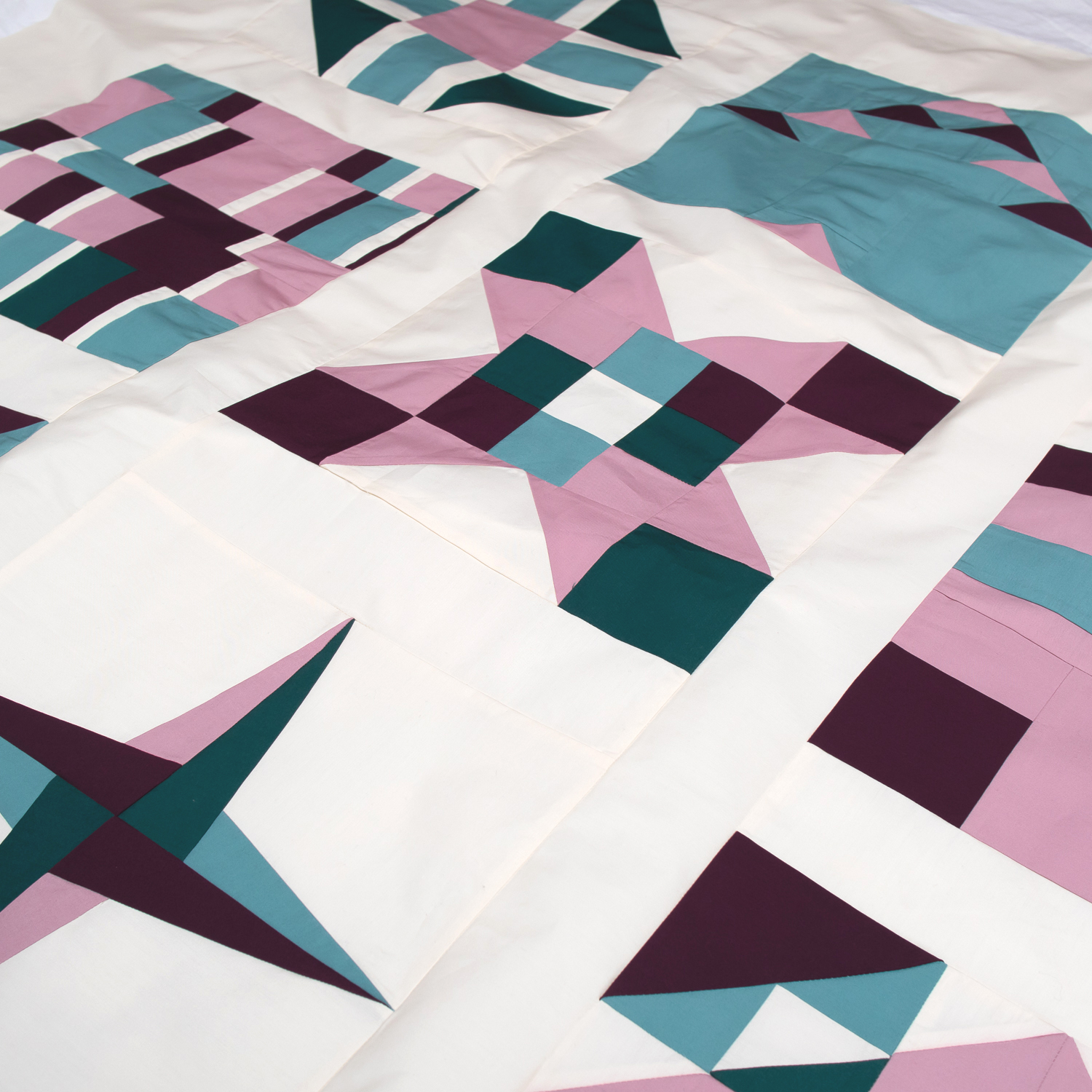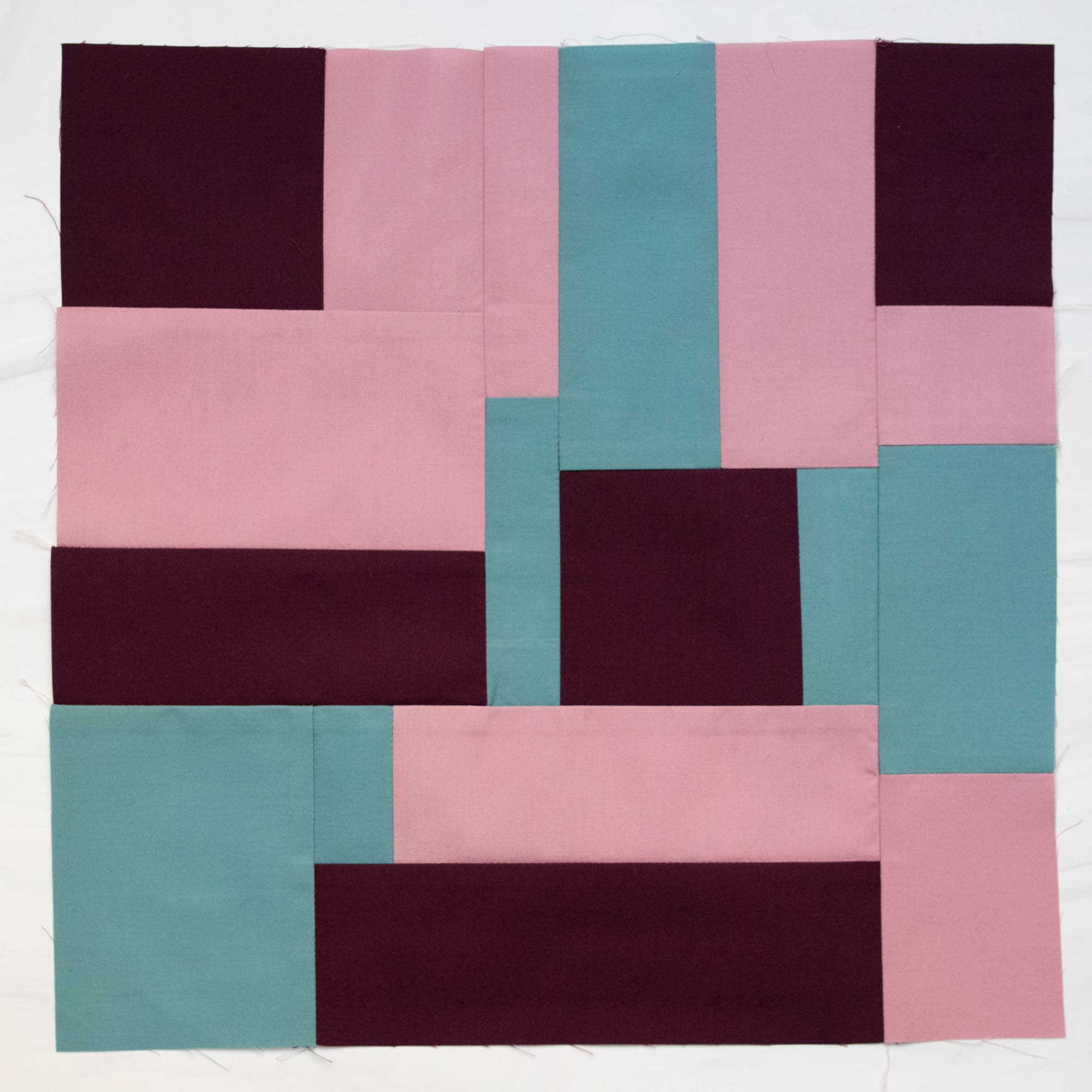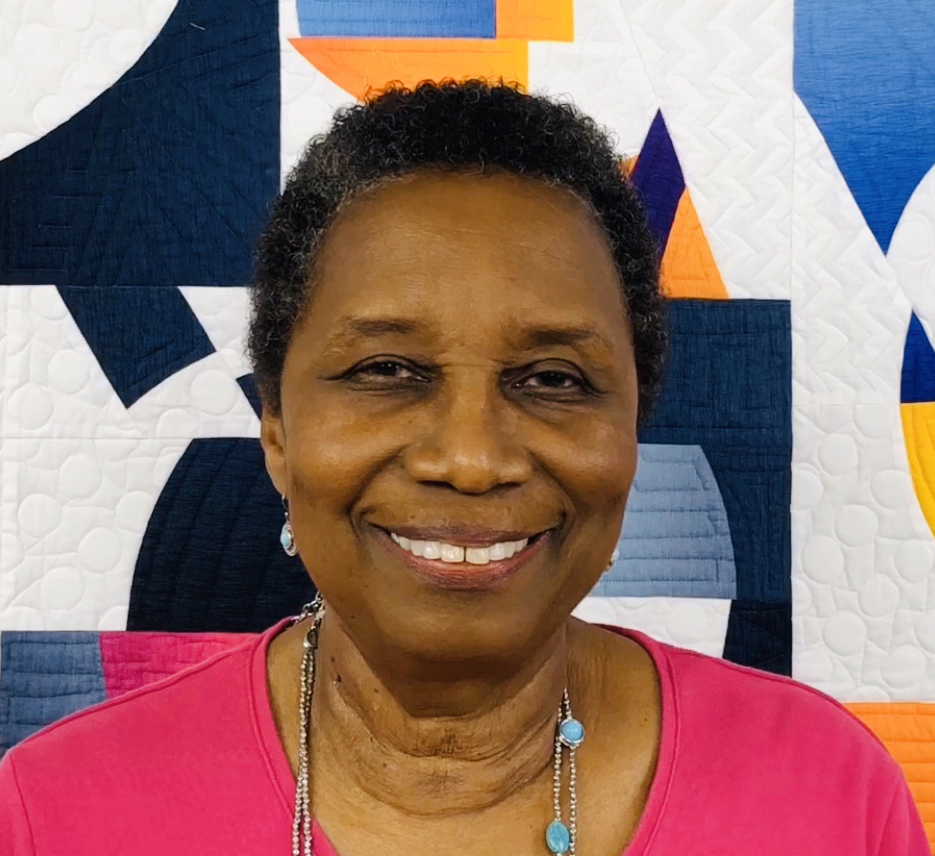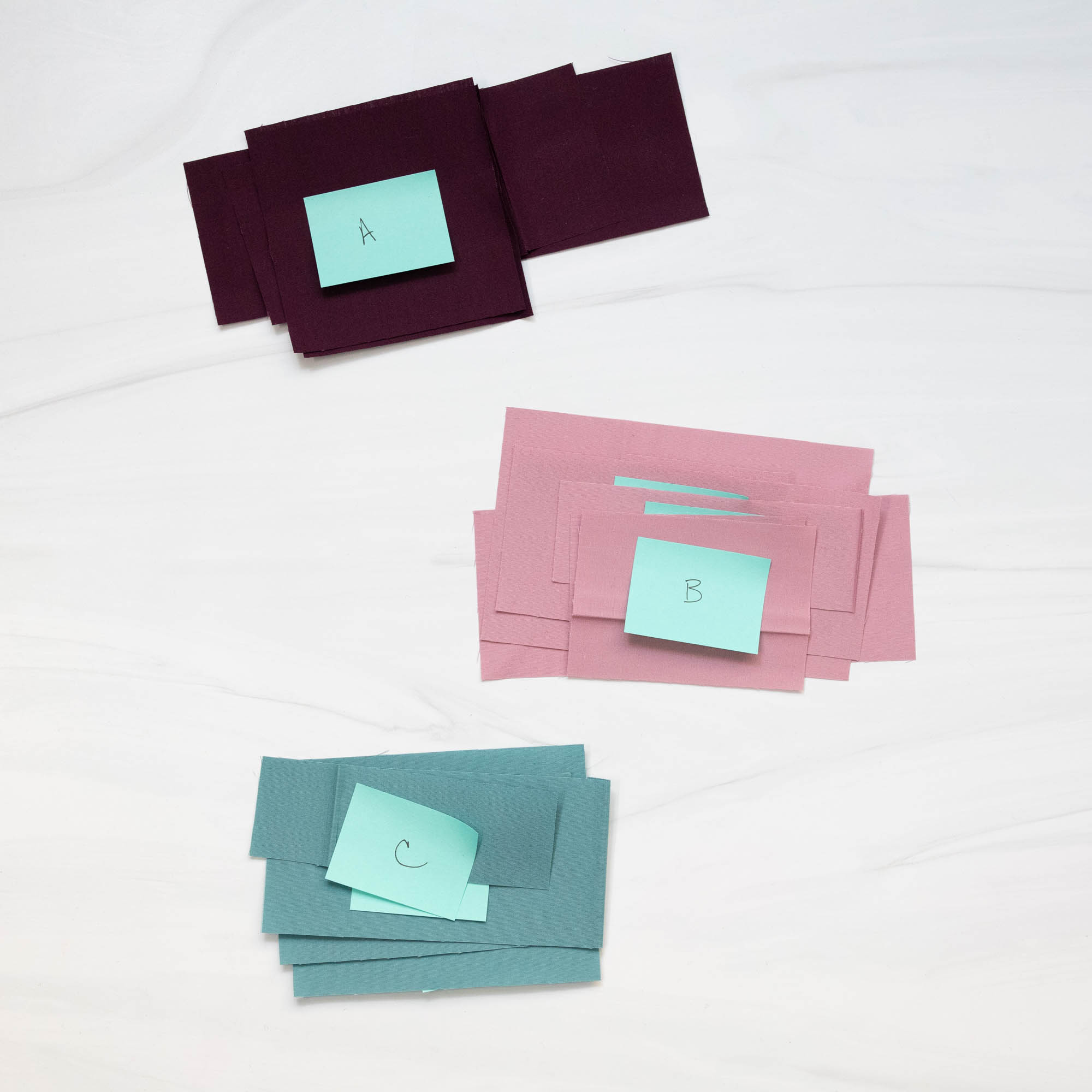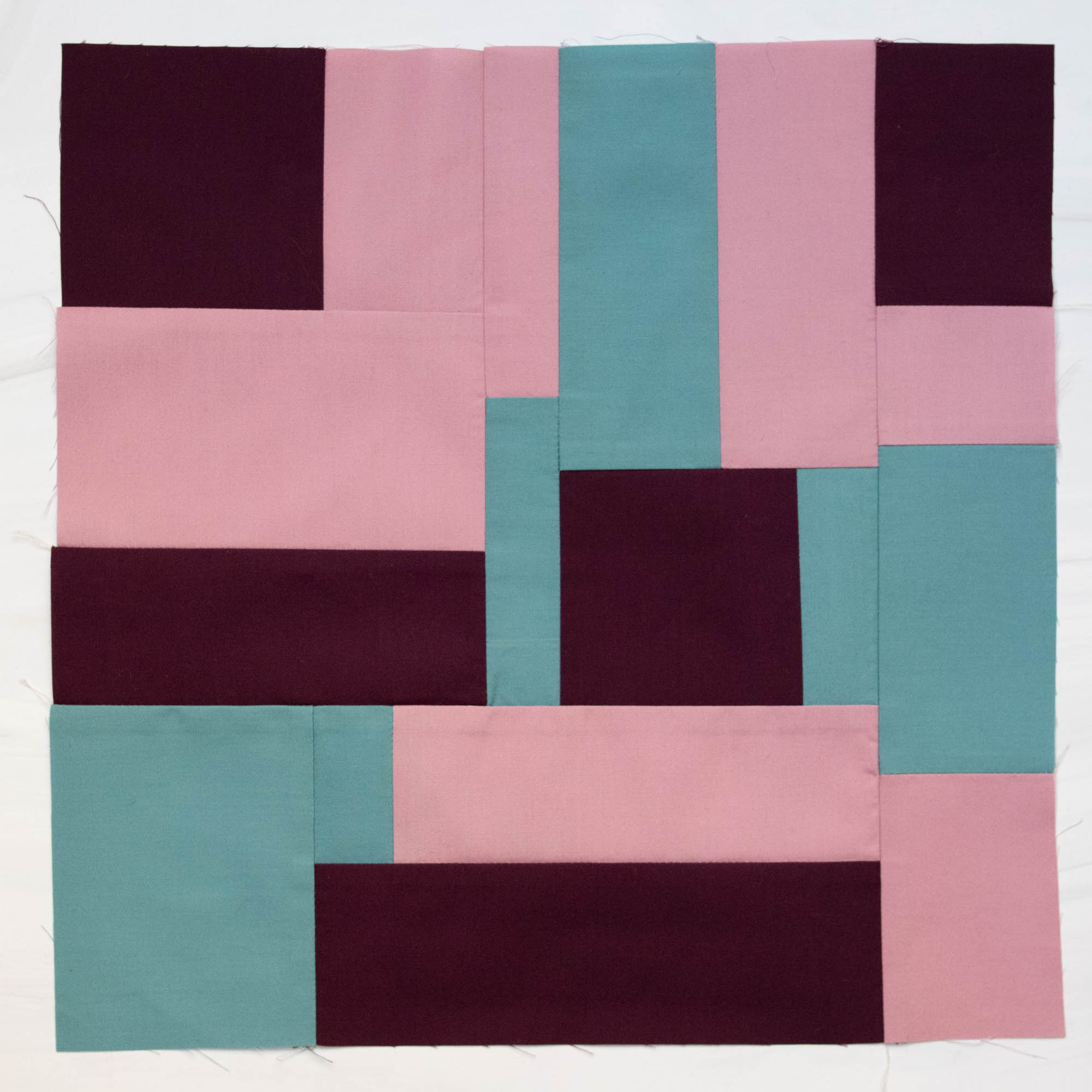Block #9 – Georgia Bonesteel
Birthday Block of the Month #9: Georgia Bonesteel
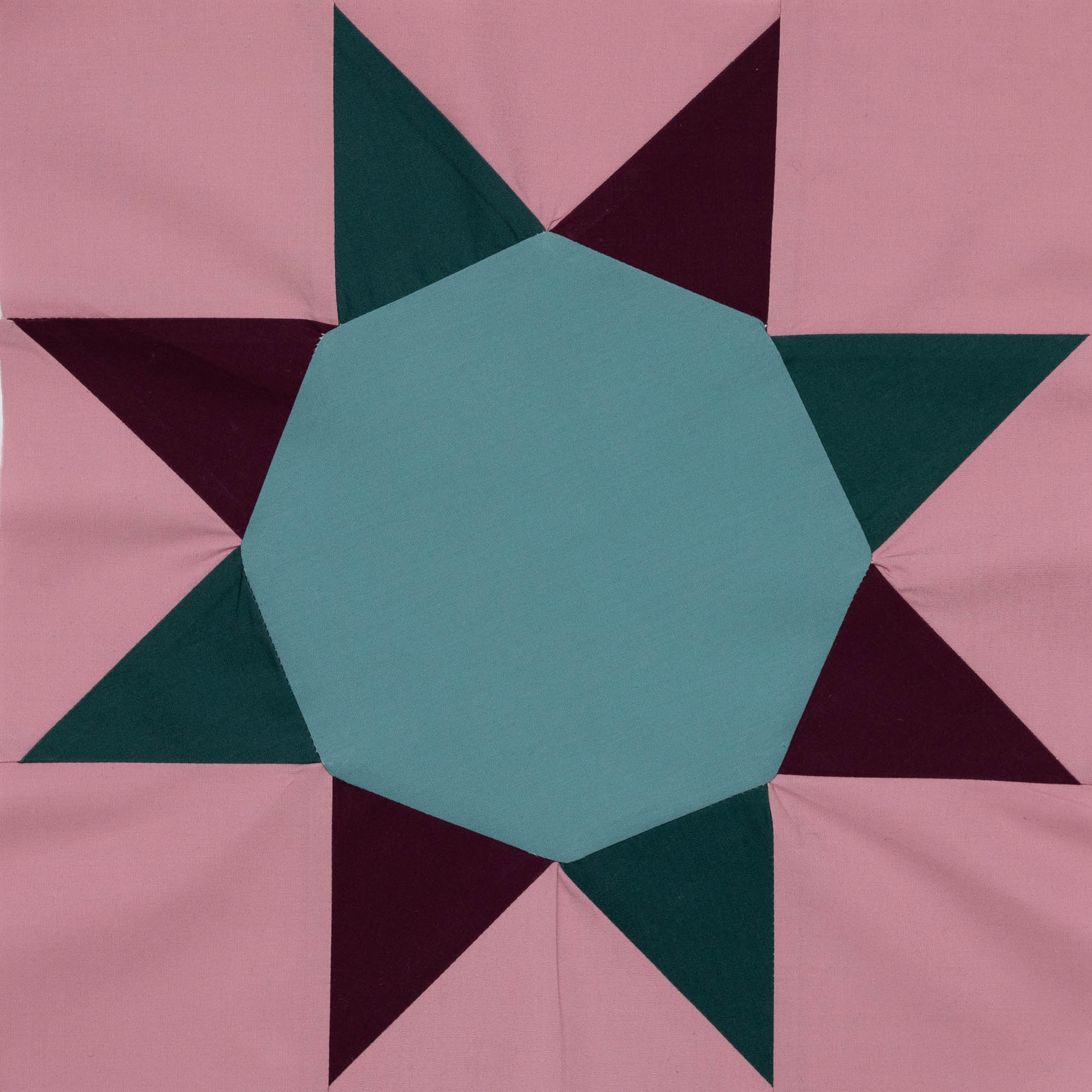
It’s here! It’s here! The final block of the Quilt Alliance Birthday Block of the Month! After nine fun months, we are nearing the end of our quilt. After making the ninth block, all you’ll need to do is assemble the quilt top and you’re done! Quilting icon Georgia Bonesteel designed this month’s block, which we saved for last because it will utilize some new techniques like piecing with templates, floating seams, piecing triangles, and working from the outside in. While it looks complex, Georgia’s designs have a way of being simple and enjoyable. The block is as charming as she is!
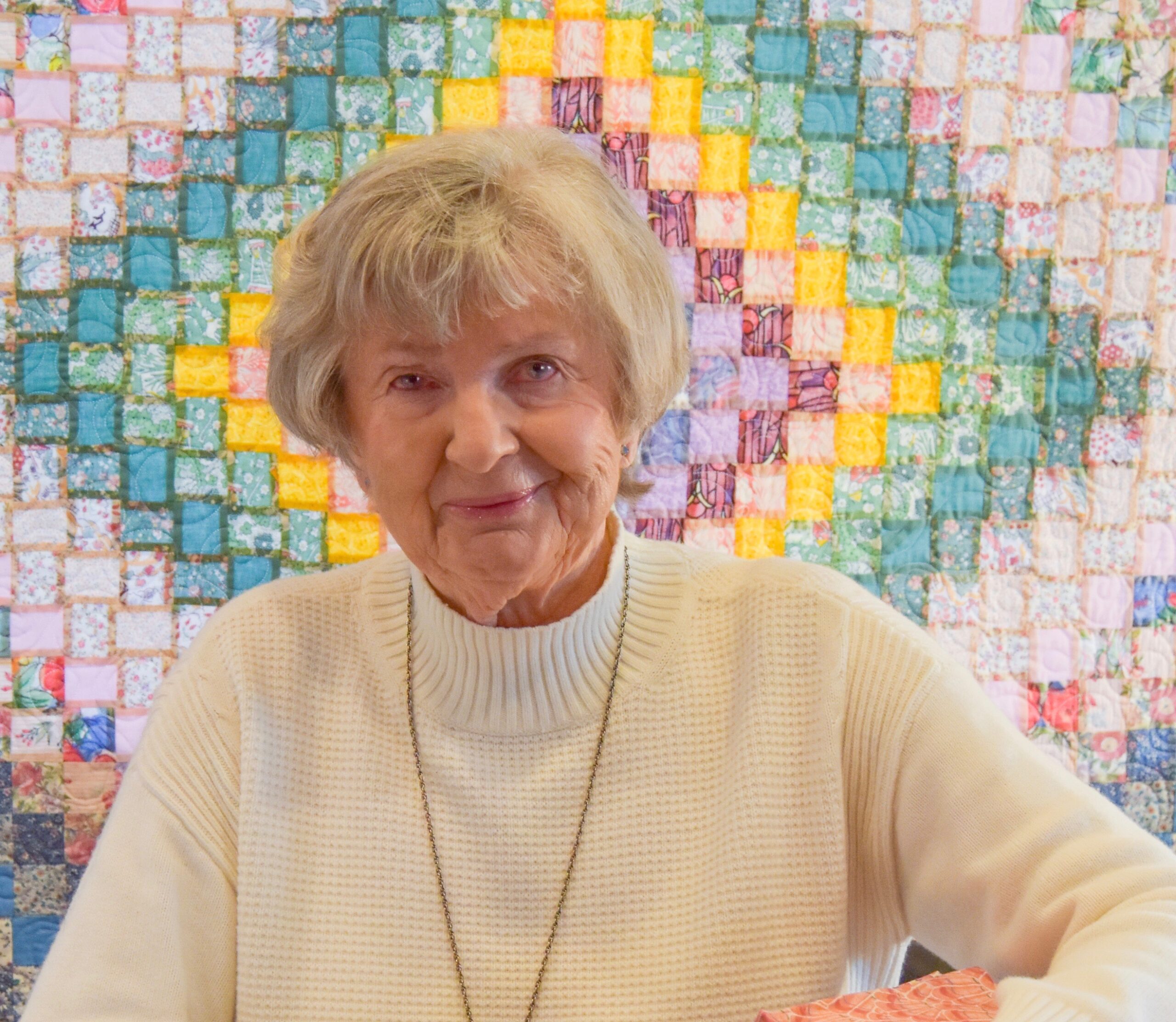
Meet Georgia Since 1978 when her television program, Lap Quilting with Georgia Bonesteel, debuted on North Carolina Public Television, Georgia has been one of the most watched and notable teachers in quilting. Her methods and designs respect traditions and push quilters to explore creativity. Georgia’s most recent book, Scrap Happy Quilts is both a memoir of her life in quilts and new projects and patterns for quilters of all skills. Today, Georgia lives a busy semi-retired life volunteering her master gardening skills to the community and her own garden, while continuing to create quilt projects on a daily basis. You can visit her wonderful website or follow her on Facebook. Georgia recorded a fabulous video talking about her connection to this particular quilt block and even showing a way that you can self-draft the templates for the block yourself. Watch the video below — you’ll love it! Quilters today (like myself) may not be accustomed to quilting this way. It’s wonderful and fascinating to watch!
Georgia’s Top BOM Tips Georgia is a quilting trailblazer and full of piecing wisdom, including techniques that were completely new to me! Here are her best tips for making this block.
Georgia’s Tip 1: Use Freezer Paper To get accurate templates for the central octagon and star unit triangles, freezer paper is the way to go. Cut the freezer paper templates out with a generous amount of space around them as shown above. Press them to the fabric. Using a ruler and rotary cutter, cut along the solid outer lines of the templates. The dashed inner lines show the seam allowance. An added tip is to use a rotary cutter with a dull blade that you plan to replace, or a rotary cutter dedicated to paper so you don’t dull the blade quickly.
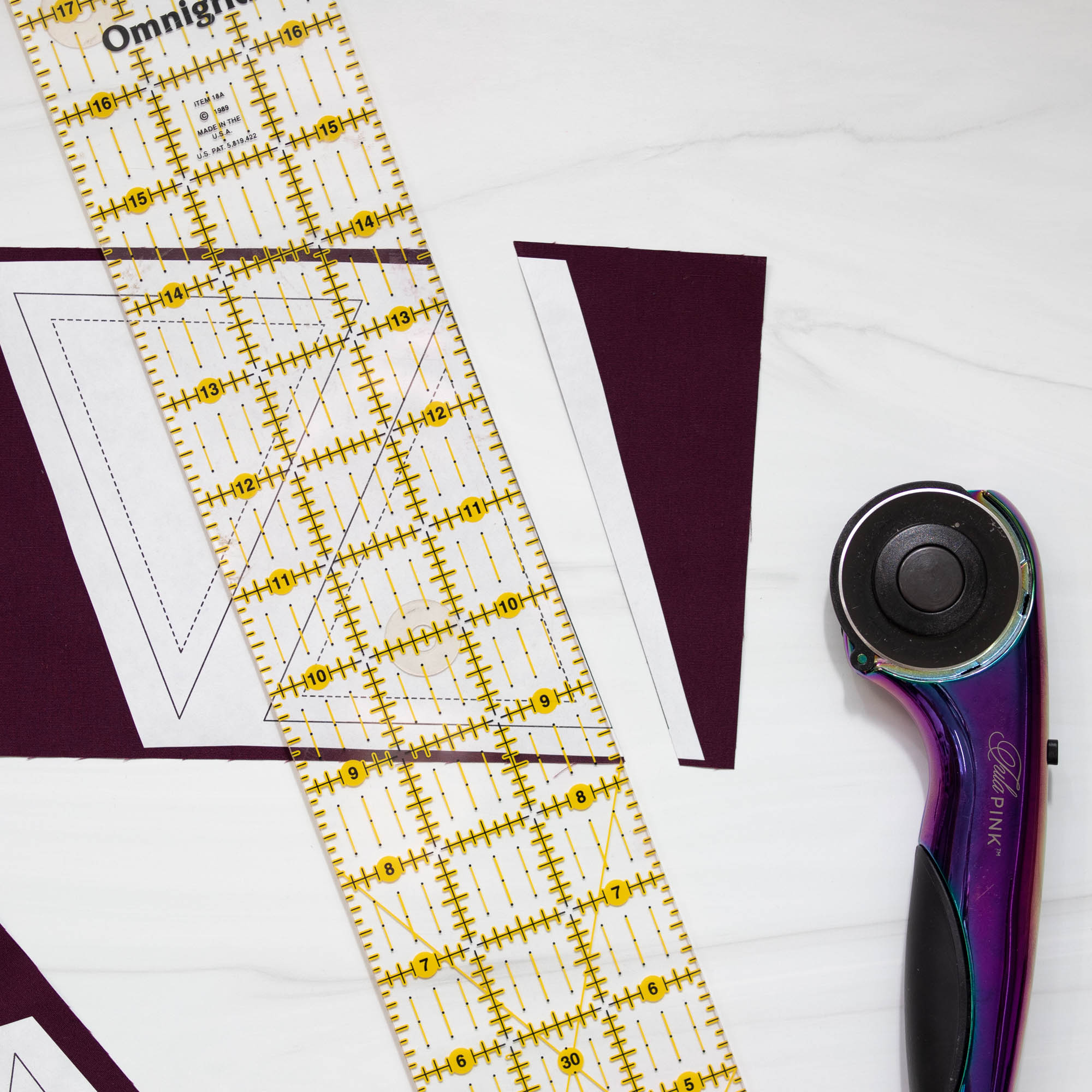
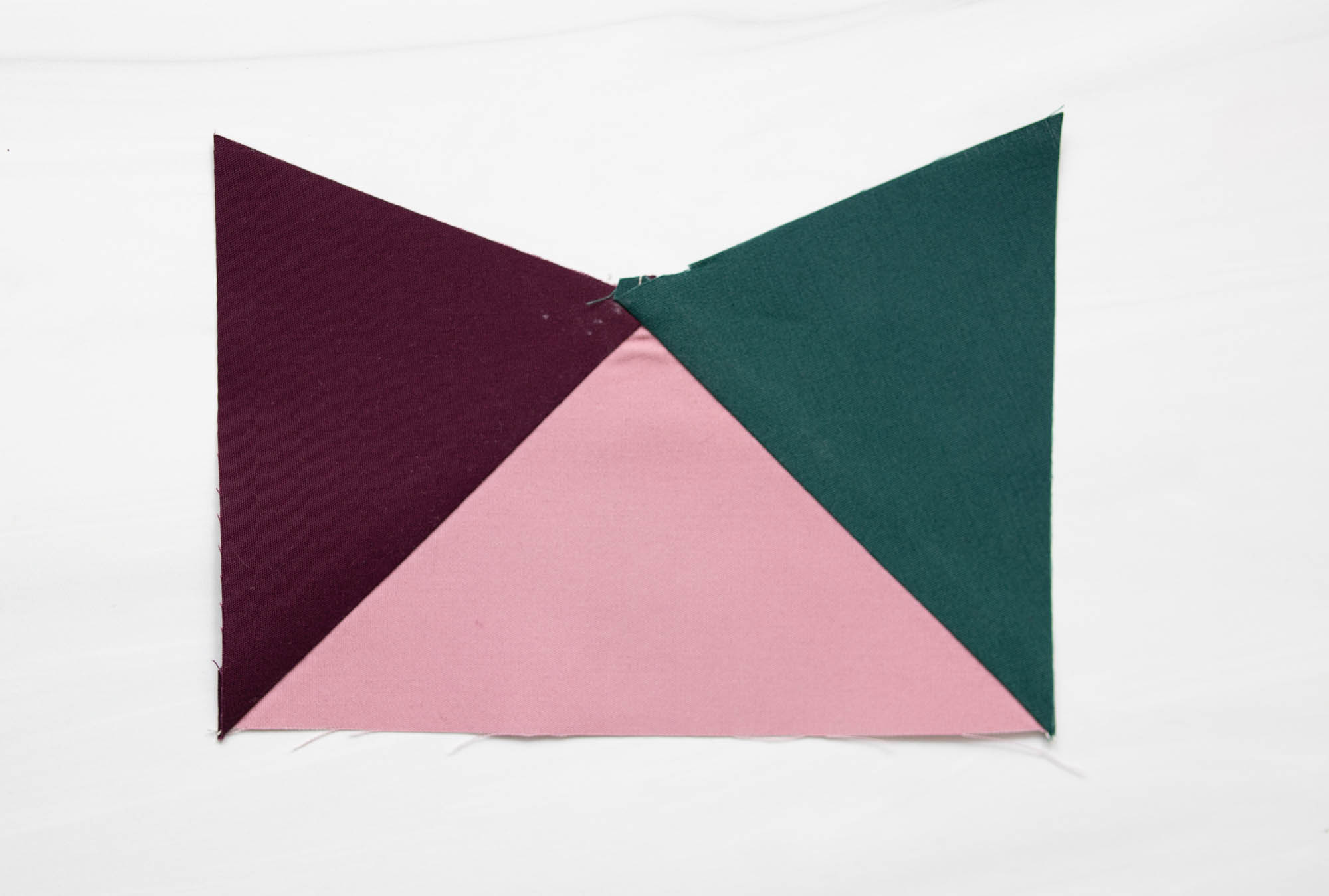
Georgia’s Tip 2: Learn to Draft a Block You can use the templates and measurements in this month’s PDF to complete the block, but as Georgia says, you’re not a real quilter until you can make a block from scratch. Learn her block drafting method in her video included in this blog post!
Georgia’s Tip 3: Create 90 degree angles When creating the star units, always match up the 45°angles to create 90° angles. This allows you to sew the triangle units to the corner squares. Pretty clever!
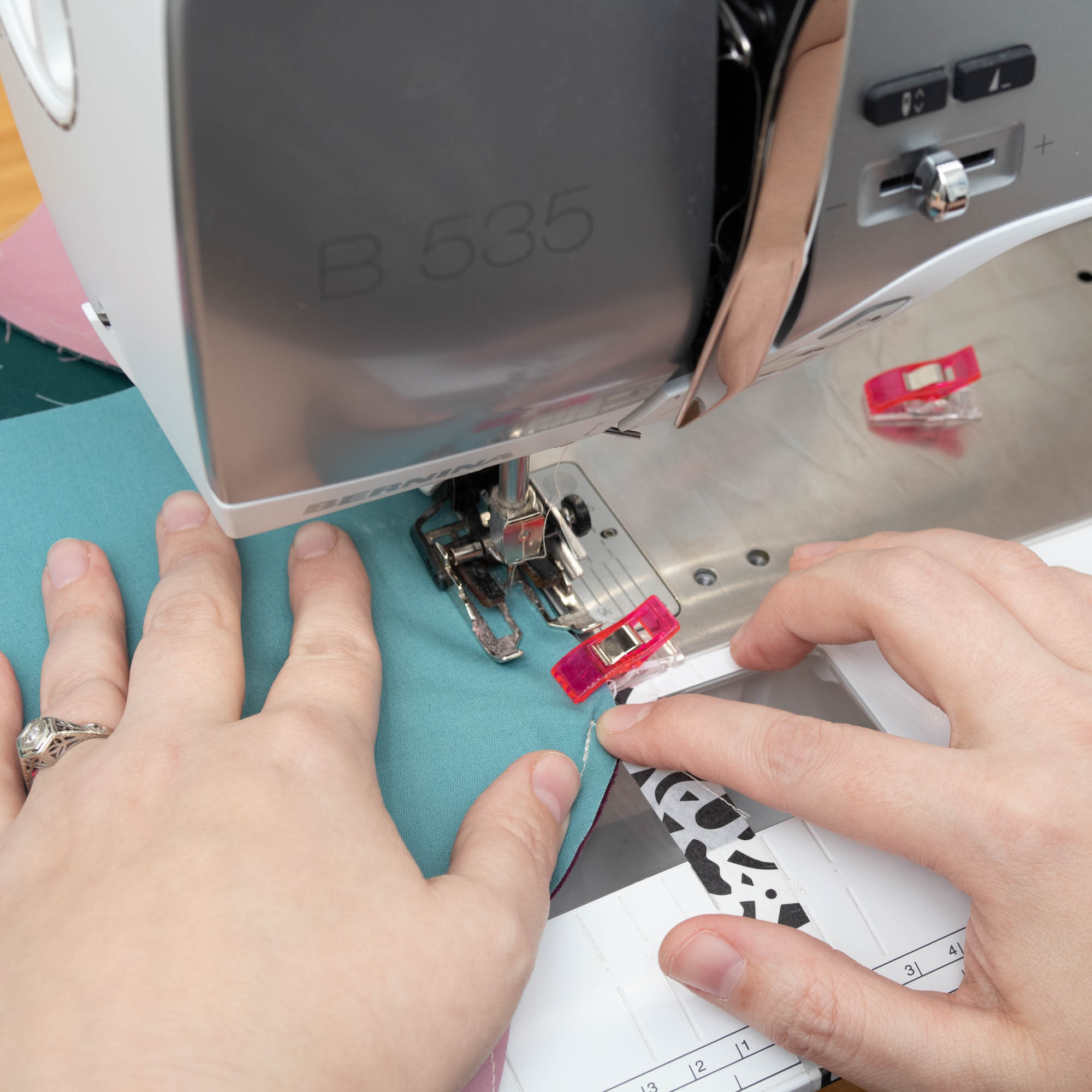
Quilt Alliance BOM Tips Each month, we share our best tips for making the Birthday Block of the Month as well. These tips come to you from our Birthday Block of the Month host, Quilt Alliance co-president Laura Hopper!
Play With Color Did you notice that I used a different color for my center octagon than appears in the PDF pattern? Instead of Color 3, the neutral color, I used Color 2. That’s because during a previous month of the BOM, I made a cutting error and ran out of Color 3 fabric. Oops! It happens to the best of us. Luckily with this block, you have the opportunity to play with color. Use Color 3, or pull in your favorite color from the quilt. Or you could use the fabric you’ll use for the backing or binding! How about using a special fabric that you fussy cut, just like Georgia did in her version of the block shown below? There are so many options! Don’t let the color guide limit you — it’s your quilt so have fun!
Align Star Units Correctly! Speaking of oops, notice something wrong with the star unit above? Yep, I made a mistake. Did I mention that it happens to the best of us? As Georgia said in her tips, the 45° angles of these triangles should be aligned. However, when I picked up my green fabric, I didn’t do that. I accidentally sewed the 45° angle to the center of the pink fabric, instead of to the 45° angle of the pink fabric. That doesn’t look like a 90° angle! Thank goodness for seam rippers because if you make the same mistake I did, all you need to do is rip that seam out and sew the triangle on the other way. Easy breezy!
Manipulate Fabric for the Octagon Have you ever made a block from the outside in? I haven’t! This was a completely new technique for me. And I learned a few things while doing it. One useful tip is that to avoid puckers, make sure that the fabric is completely flat. This is a bit hard to do at first! I found that I needed to manipulate the fabric to get the octagon to lay flat on the outer star ring. Here are some pictures that might help! It’s very hard to explain but trust me when I say it’s something that you will get once you get to this step.
Accept Mistakes… or Redo Them It’s possible that with all the fabric manipulation in the world, you may still get puckers in your block. It happened to me! When I saw my pucker, I had a choice to make. I could either rip out the seam and redo it to try and avoid the pucker. Or I could accept that I was learning a new technique and the results were imperfect. If you’ve been following this BOM for all nine months, you’ve probably noticed that I consider myself a precision quilter. I love when points line up perfectly. Making a perfect block is a wonderful feeling…but so is learning a new technique. If there’s one lesson I can leave you with at the end of this BOM, it’s that the only thing you should compare your latest quilt to is the last quilt you made. I help beginner quilters learn new techniques every day, and it’s very easy for a new quilter to compare themselves to someone who has been quilting for decades. You know what happens next? The new quilter gets discouraged. They think their quilts will never look that good. And they give up. For me, quilting is about seeing my personal growth. The points on my early quilts don’t match well, but now I know so many of the tricks that I’ve shared with you along this journey! And that’s how I approached this block. I learned new techniques from Georgia, who has been quilting since before I was born, and this is the first time I ever did them. I left my puckers in as a reminder that I’m always growing. And so that in ten more years, once I’ve practiced her techniques even more, I can see how much I’ve grown. I hope you all share the same outlook on quilting, growth, and learning!
Quilt Documentation Tip Follow Georgia’s lead as one of the most important figures in recent quilting history and document what you do! As a television personality, lots of Georgia’s quilting has been documented on film. Making a video about your blocks or finished quilts is a great way to preserve your story! Learn more about how in the next blog post, focused on documenting your completed quilt.
